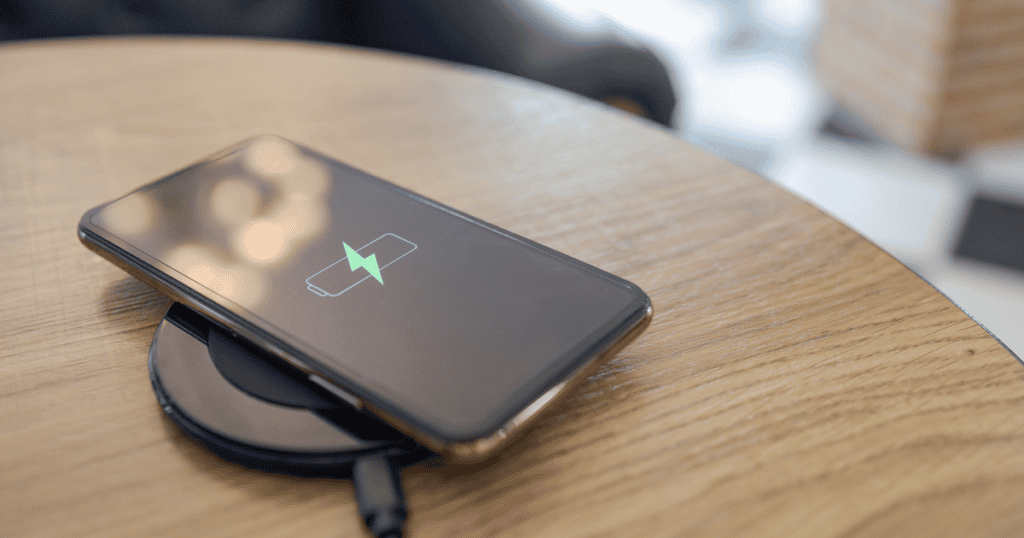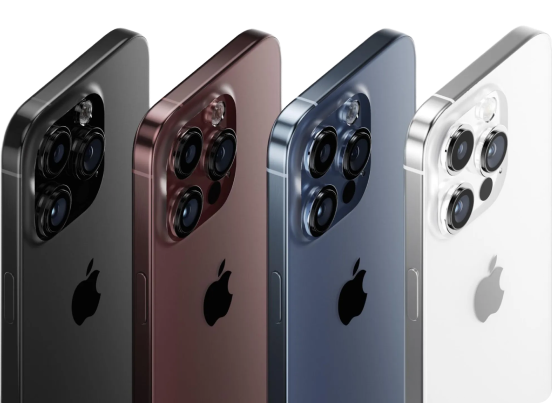You might find yourself wondering if the iPhone 17 Slim truly marks the beginning of Apple’s glass revolution. With its sleek design and innovative features, it signals a shift in how smartphones are constructed and perceived. This model not only prioritizes aesthetics but also hints at a future where glass technology plays a pivotal role in device functionality. As Apple sets the pace, the question arises: how will competitors respond to this bold move? Exploring the implications of this shift could reveal more than just a trend—it could redefine our expectations of smartphone materials.
Design Innovations in Iphone 17 Slim
The iPhone 17 Slim introduces groundbreaking design innovations that prioritize a sleek, minimalist aesthetic, making it a standout choice for style-conscious consumers.
With its remarkably thin profile and display size ranging from 6.5 to 6.6 inches, the iPhone 17 Slim pushes the boundaries of smartphone design. You’ll notice the slimmer bezels that create an almost borderless screen experience, enhancing the visual appeal.
One of the most exciting aspects is the potential for under-display Face ID technology. This feature not only streamlines the front design but also aligns with Apple’s commitment to a seamless user experience. Imagine having no interruptions on your display—just pure, uninterrupted beauty.
Apple’s focus on minimalist design extends to integrating components invisibly, paving the way for a device that feels like a single slab of glass. The reduced Dynamic Island further emphasizes this aesthetic, ensuring that every inch of the screen is dedicated to what matters most—your content.
As you consider your next smartphone, the iPhone 17 Slim stands out with its innovative design that marries form with function beautifully.
The Impact of Glass Technology
Innovations in glass technology are set to redefine the iPhone 17 Slim’s design, enhancing both its aesthetic appeal and functionality.
With advancements in durable design, this new model promises to strike a balance between elegance and resilience. Imagine holding a device that combines a thinner profile with robust materials, ensuring it withstands daily wear and tear while maintaining that coveted minimalist aesthetics.
One of the most exciting features is the potential for under-display Face ID, seamlessly integrating security without compromising the sleek look of the iPhone 17 Slim. This innovation could eliminate the need for bezels, pushing the boundaries of what a smartphone can be.
As you explore the possibilities, you’ll notice how this shift toward more prominent glass elements not only elevates the design but also aligns with your preferences for lightweight devices.
Ultimately, the iPhone 17 Slim could set a new standard in smartphone design, inspiring competitors to adopt similar glass technology. With each advancement, Apple isn’t just creating a product; it’s shaping your expectations and experiences in the world of technology.
Historical Context: Apple’s Design Evolution
Apple’s design evolution has set the stage for groundbreaking changes in smartphone aesthetics since the launch of the iPhone X in 2017. This model introduced an edge-to-edge display, eliminating the home button and reshaping how you perceive smartphones.
The design shift didn’t stop there; with the iPhone 12 series, you saw a return to flat edges, reminiscent of the iPhone 4, which emphasized a more angular and minimalist aesthetic.
As each new iPhone model arrived, Apple progressively reduced bezel sizes and integrated components, moving closer to a vision of an invisible bezel and seamless glass design. The 12-inch MacBook, released in 2015, further illustrated Apple’s commitment to prioritizing design, hinting at the influence this philosophy could have on the upcoming iPhone 17 Slim.
With the anticipated iPhone 17 Slim, you might witness a continuation of this trend, featuring under-display technology for Face ID and front cameras. This could mark a pivotal moment in Apple’s design philosophy, potentially leading to a new standard in smartphone design that combines elegance with high functionality.
Consumer Preferences for Sleeker Devices
Consumer preferences clearly lean towards sleek, minimalist devices that combine aesthetic appeal with functionality. As you consider your next smartphone, the iPhone 17 Slim likely catches your eye. Its design emphasizes sleek lines and a thinner profile, setting a new benchmark for premium devices in the market. This shift towards sleek designs reflects a growing desire for portability and visual elegance among users like you.
Market trends show that many individuals are willing to pay a premium for stylish devices, indicating how crucial design has become in purchasing decisions. The anticipation surrounding the iPhone 17 Slim suggests that its aesthetic appeal will resonate strongly with consumers, potentially shifting how you and others value design in smartphones.
Discussions and polls reveal that you’re not alone in your interest; many consumers are eager to see how Apple’s commitment to a sleeker look will influence their buying choices.
As the iPhone 17 Slim debuts, it may just catalyze a broader trend in the industry, encouraging more brands to embrace similar sleek designs, ultimately reshaping the smartphone landscape to cater to your preferences.
Competitors Reacting to Apple’s Lead
As the iPhone 17 Slim sets new design standards, competitors are scrambling to keep up and elevate their own offerings. The sleek, minimalist design of the iPhone 17 Slim has captured attention, prompting brands like Samsung and Google to rethink their strategies. These competitors realize that to remain relevant, they need to prioritize design innovations that match Apple’s aesthetic appeal.
You might see rival companies accelerating their evolution towards slimmer profiles, focusing on visually striking features that resonate with consumers’ growing preference for style. The introduction of glass-centric designs could become a trend, as manufacturers aim to replicate the premium feel of the iPhone 17 Slim. If Apple’s design philosophy proves successful, expect others to follow suit, emphasizing aesthetics alongside technical specifications.
This shift could reshape the market landscape, pushing competitors to enhance their material choices and design elements. In doing so, they’ll not only compete with Apple but also attract consumers who are increasingly valuing form as much as function in their devices.
Ultimately, the iPhone 17 Slim may not just lead a revolution for Apple, but also inspire a broader movement among smartphone manufacturers.
Future of Smartphone Materials
The future of smartphone materials is shifting towards advanced glass technologies that promise enhanced durability and a sleek, modern aesthetic. As you navigate this new landscape, you’ll likely encounter Gorilla Glass Victus, which offers impressive scratch resistance and durability. Alongside this, innovations like ceramic shield technology are being integrated to improve impact resistance, ensuring your device can withstand daily drops and wear.
As manufacturers embrace minimalism in smartphone design, the use of ultra-thin glass is becoming increasingly popular. This allows for lighter devices without compromising structural integrity, creating a seamless look that many consumers desire.
You’ll also see a growing focus on eco-friendly glass recycling methods, aligning with the demand for sustainable products in today’s market. These advancements in materials not only enhance the functionality of smartphones but also cater to your aesthetic preferences.
As you consider your next device, the emphasis on advanced glass technologies will likely play a crucial role in shaping your choices, reflecting a blend of innovation and style that defines the future of smartphones.
Expert Opinions on Glass Revolution
Experts believe the iPhone 17 Slim will usher in a new era of smartphone design, prioritizing sleek glass aesthetics and functionality. The device’s design-centric approach focuses on a single slab of glass with minimal bezels, creating a seamless user experience. With features like under-display Face ID and an integrated front camera, Apple aims to enhance both style and usability.
Analysts predict that this shift will significantly influence consumer preferences, moving the focus from traditional technical specifications to the device’s overall aesthetic appeal. The iPhone 17 Slim’s advanced glass materials not only promise durability but also elevate its visual allure, reinforcing the importance of design in today’s market.
Additionally, experts suggest that Apple’s innovative approach could set a new standard for competitors, compelling them to adopt similar sleek glass designs in their future products. As consumers increasingly favor lightweight and visually striking devices, the iPhone 17 Slim is poised to lead this glass revolution.
Ultimately, it’s clear that Apple’s commitment to merging technology with design could redefine expectations in the smartphone industry, shaping consumer choices for years to come.
MacReview Verdict
The iPhone 17 Slim isn’t just a new device; it’s a bold step into Apple’s glass revolution.
With its sleek design and advanced materials, it sets a high bar for aesthetics and functionality.
As you embrace this innovation, you’ll likely notice how it influences your experience and the wider market.
Competitors will need to keep up, pushing the boundaries of design and materials.
The future looks exciting, and you’re right at the forefront of this change.




